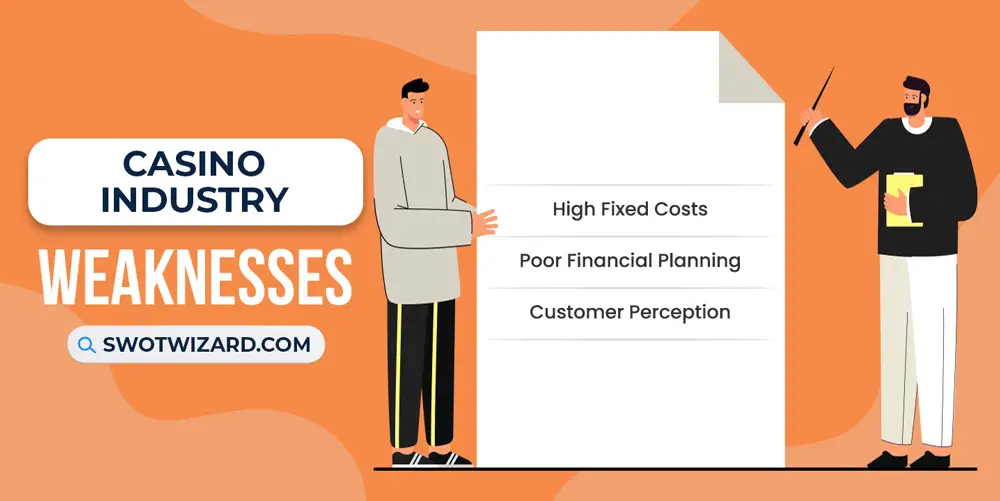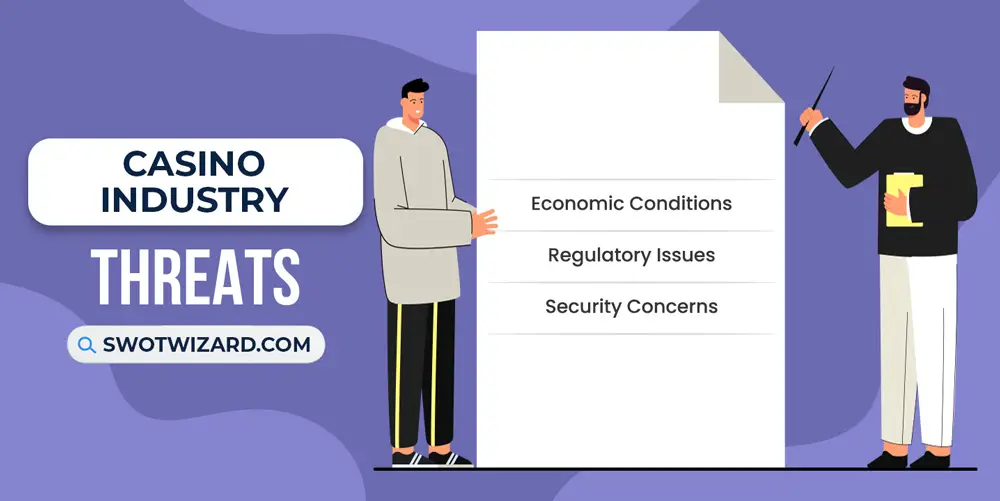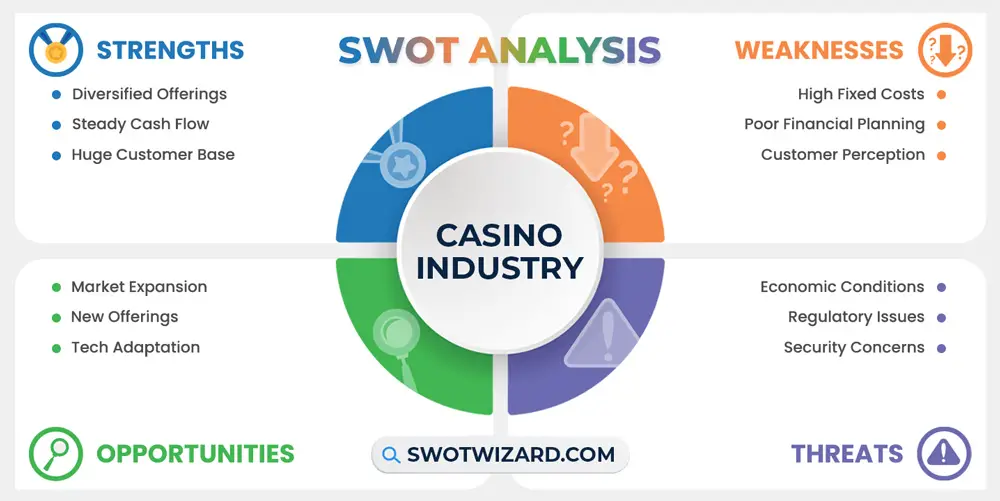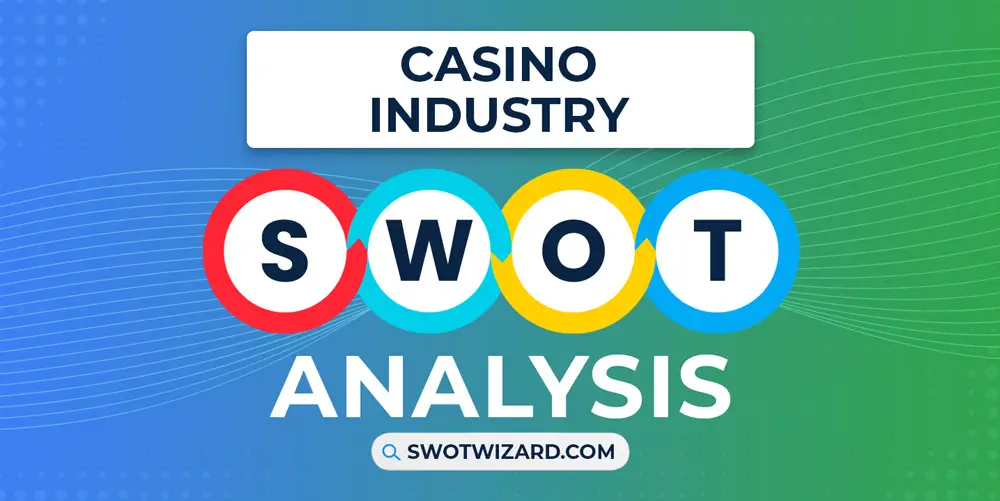The casino industry and everything that comes with it has become a sensation and a significant part of modern lifestyle or a part of entertainment for millions of people, and we will get to know the business aspects of it in this casino industry SWOT analysis.
Casino Industry Overview
The casino industry originated in the 17th century with the Casino di Venezia in Italy, but the modern casino industry traces its origins to 1931, when gambling was first legalized in Nevada, paving the way for the development of Las Vegas as America’s premier gaming destination over the ensuing decades, so it is for the rest of the world.
Presently, it spans continents with notable hubs in Las Vegas, Macau, and Singapore, employing millions of people and generating trillions yearly.
Competitors in Casino Industry
Las Vegas Sands | MGM Resorts International | Caesars Entertainment | SJM Holdings | Wynn Resorts
Did You Know?
The largest slot machine jackpot won to date was an astounding $39.7M, claimed by a 25-year-old software engineer from Los Angeles in 2003 at the Excalibur Casino.
Strengths – Casino Industry SWOT Analysis

Diversified Offerings: Casinos now provide far more than just gambling, with hospitality, fine dining, retail, and live entertainment driving over 60% of revenues. The center of gambling, Las Vegas, and its significant casinos reported huge in food & beverage sales, and it’s continuously growing and caters to different consumer segments and spending motivations.
Steady Cash Flow: Though cyclical, gambling revenues provide reliable cash flow when accounting for swings, generating over 75%+ margins from house wins. As a result, commercial casinos in the USA brought in $60.42B in gross gaming revenue in 2022 with steady multi-year CAGR growth of 4.3% nationally.
Huge Customer Base: If we look at the data, the pre-pandemic Las Vegas visitor volume reached 42.5 million people in 2019. And, in the last two years, after the pandemic, the number hasn’t changed that much, and the average visitor per year remains around 40 million, driven by repeat regional gamblers supplementing casual and tourist visits.
Weaknesses – Casino Industry SWOT Analysis

High Fixed Costs: Casinos have considerable fixed costs, including property, sizeable staffing, security, licensing fees, etc. According to data, MGM Resorts had over $3B in casino operating expenses outside of gaming taxes and payroll in the last three years on average. As a result, high overhead runs nearly 24/7 regardless of demand fluctuations, pressuring profits when activity declines.
Poor Financial Planning: Many casinos take on risky debt levels, counting on sustained growth to fund operations and capital projects. However, cyclical declines have caused debt defaults and bankruptcies. If we look at the past data, Caesars Entertainment carried nearly $25B in debt pre-pandemic with unsustainably high debt-to-EBITDA.
Customer Perception: Certain customer demographics still view casinos as having dubious social impacts despite corporate responsibility efforts. Many studies show that over 60% of USA adults believe gambling is morally acceptable, but perceptions are much lower, around 35% for seniors.
Opportunities – Casino Industry SWOT Analysis

Market Expansion: Several USA states, including Texas, Florida, and Georgia, are considering legalizing casino gaming, expanding access to new domestic markets. According to stats, Morgan Stanley estimates a total addressable casino market expansion to $75B from $65B currently.
New Offerings: Casinos can leverage expanded resort footprints to provide new hospitality, entertainment, retail, and food & beverage offerings. In the last decade, Mohegan Sun added a $130M, 20,000-seat arena to drive incremental visitor revenue streams, claiming the second highest-grossing venue of its size worldwide since.
Tech Adaptation: Mobile and internet wagering presents new distribution channels as online gambling regulation progresses state-by-state. According to the data, US internet gaming yielded over $54.9B in revenue in 2022. Besides, JPMorgan estimates the online channel could represent over 20% of total casino revenue within years as tech-savvy generations integrate gaming.
Threats – Casino Industry SWOT Analysis

Economic Conditions: Casino revenues are heavily tied to discretionary consumer spending and overall economic health. According to the data, Las Vegas strip gaming revenue declined over 37% year-over-year in 2009 during the Great Recession, not to mention the revenue impact it had during the COVID-19 pandemic.
Regulatory Issues: Increasing state and federal gaming taxes plus tighter license restrictions can pressure operators, as we can see that a 2020 Illinois gambling expansion imposed tax rates up to 50% in certain areas. Additionally, growing regulatory bans on smoking, alcohol distribution, and marketing activities can negatively impact casino frequency and profitability if not properly balanced.
Security Concerns: The prevalence of cash transactions and databases containing customer financial data presents growing cybersecurity threats around hacking, fraud, and theft. It has been happening for a long time, and a 2018 cyber attack on casino operator Affinity Gaming compromised credit card data and other sensitive information from over 300,000 guests.
[Bonus Infographic] SWOT Analysis of Casino Industry

Recommendations for Casino Industry
Here are some recommendations for the casino industry.
- Expanding accommodation, entertainment, dining, retail, and other non-gaming offerings cater to wider audiences and diversify revenue streams.
- Implement layered cybersecurity defenses through staff training, cyber insurance, AI threat detection, and regular contingency planning to protect sensitive customer data.
- Boost responsible gambling programs and transparency while limiting risky marketing tactics.
- Expand methodically into gaming markets through calculated regional investments and by lobbying for favorable tax treatment to balance growth prospects with economic risks.
Frequently Asked Questions (FAQs)
Who owns the biggest casino?
The Chickasaw Nation owns the biggest casino.
What is the most famous casino?
Bellagio is the most famous casino.
Final Words on Casino Industry SWOT Analysis
The casino industry exhibits strong growth potential but faces ongoing vulnerability to economic shifts and evolving regulations. Keys to future success will lie in providing differentiated hospitality and gaming experiences across both physical and digital channels, supported by data-driven marketing and disciplined financial management. Companies able to balance the attraction of new markets and customers with responsible, visionary practices will gain a competitive advantage as the sector continues maturing.




